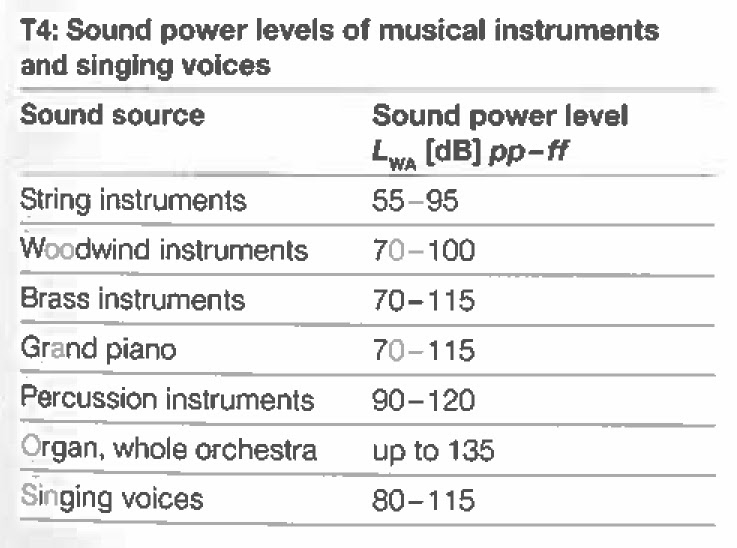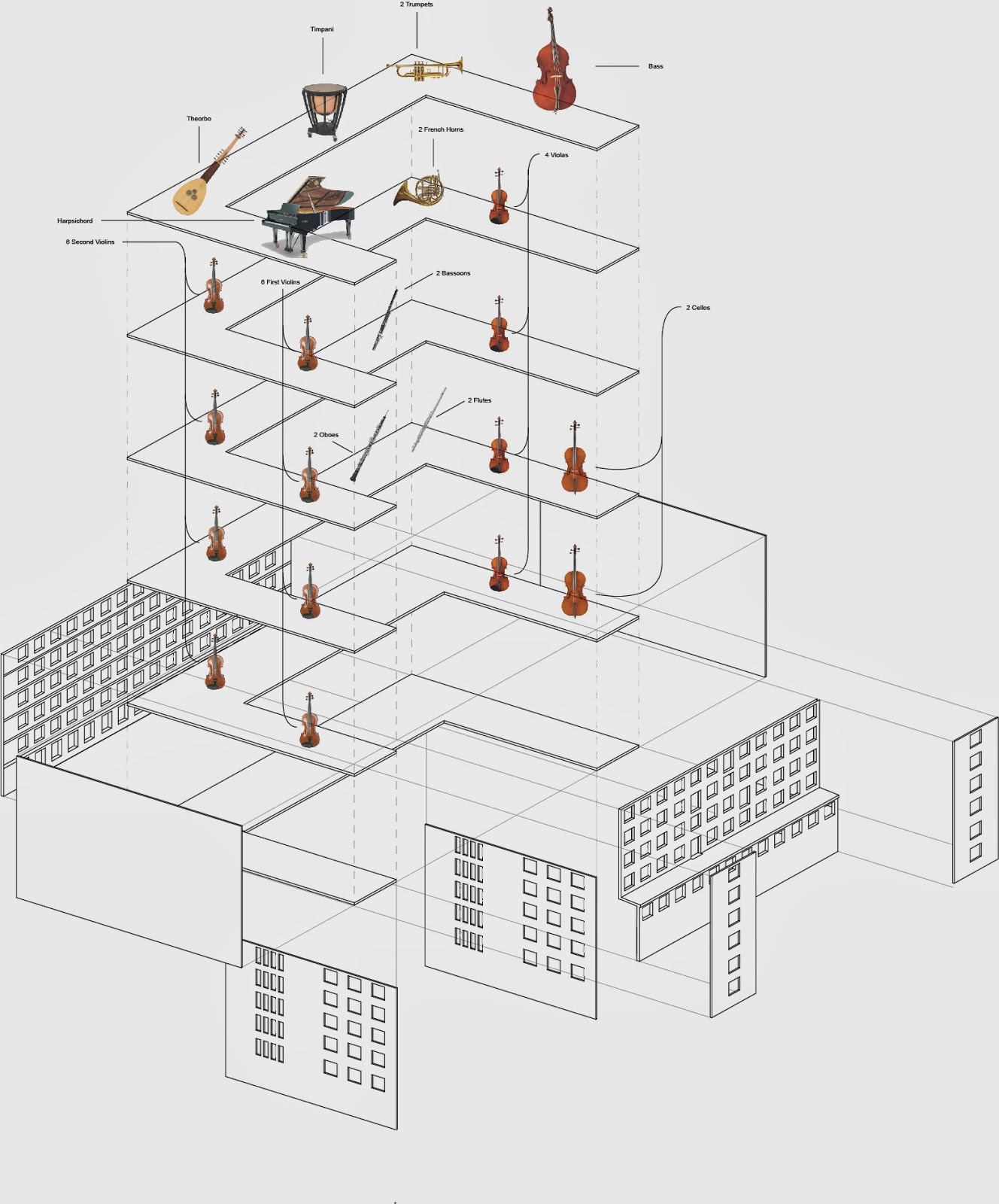Rehearsal
"He would prefer a light room with 3-4 meters to the ceiling, glass can be used as a reflective surface."
"He rehearse 4-5 hours daily alone."
Performance
"Larger surfaces are used to break up sound from deeper tones and smaller surfaces are used to break up lighter tones."
"Longer reverberation time blurs the sound, but makes the instrument still sound when not playing."
"Music next to the ear makes the experience more intimate."
"The longer the sound has to travel the worse the sound gets."
"Terraces breaks up the sound."
"When playing in an orchestra one is very much aware of the other musicians."
"In the ceiling of the symphonic hall there are huge adjustable panels."
Individual instruments
"The French horn plays backward and at least 2 meters to a wall is required."
"Trumpet and Trombone are directional."
"The floor underneath the Bass is able to vibrate so the the floor does not absorb the deep tones."
"Clarinet, Piano, Violin, and Viola are warm and intimate instruments."
"Cello are lifted because it is played near the ground."
"Bassoon is clearly deeper than the Flute."
"Percussion needs a lot of space."




.jpg)
























